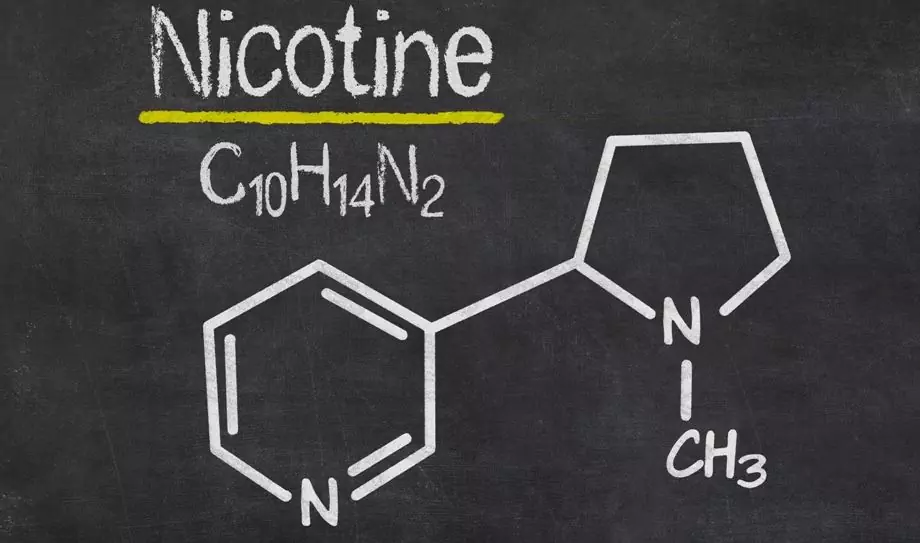- Author Rachel Wainwright [email protected].
- Public 2023-12-15 07:39.
- Last modified 2025-11-02 20:14.
Dobutamine HEXAL
Dobutamine HEXAL: instructions for use and reviews
- 1. Release form and composition
- 2. Pharmacological properties
- 3. Indications for use
- 4. Contraindications
- 5. Method of application and dosage
- 6. Side effects
- 7. Overdose
- 8. Special instructions
- 9. Application during pregnancy and lactation
- 10. Use in childhood
- 11. Drug interactions
- 12. Analogs
- 13. Terms and conditions of storage
- 14. Terms of dispensing from pharmacies
- 15. Reviews
- 16. Price in pharmacies
Latin name: Dobutamin hexal
ATX code: C01CA07
Active ingredient: Dobutamine
Manufacturer: Wasserburger Arzneimittelwerk Dr. Madaus GmbH & Co. KG (Germany), Solvay Pharmaceuticals (Germany), Haupt Pharma Wulfing GmbH (Germany), Grindeks (Latvia), Russian Cardiology Research and Production Complex Medresurs (Russia)
Description and photo update: 2018-10-05

Dobutamine HEXAL is a drug with cardiotonic action.
Release form and composition
The dosage form is a lyophilisate for the preparation of a solution for infusion: from a slightly pink to white powder (in glass vials with a capacity of 20 ml, in a cardboard box 1 bottle).
Composition of 1 bottle of lyophilisate:
- active substance: dobutamine - 250 mg (in the form of dobutamine hydrochloride - 280 mg);
- auxiliary component: mannitol - 250 mg.
Pharmacological properties
Pharmacodynamics
Dobutamine is a non-glycoside cardiotonic substance, beta-1-adrenomimetic. It is a racemate, a synthetic sympathomimetic amine structurally related to isoproterenol and dopamine.
Has a positive inotropic effect on the myocardium; moderately increases heart rate (heart rate), increases minute / stroke volume of the heart, lowers vascular resistance in the pulmonary circulation and OPSS (total peripheral vascular resistance). In this case, the systemic pressure does not change significantly.
Dobutamine HEXAL helps to improve the supply of oxygen to the myocardium, increases coronary blood flow, and causes a decrease in the filling pressure of the ventricles of the heart. An increase in cardiac output can lead to increased renal perfusion and increased excretion of fluid and sodium ions.
In children, the increase in stroke volume under the influence of dobutamine occurs with a less pronounced decrease in ventricular filling pressure and OPSS; at the same time, an increase in heart rate and an increase in blood pressure (blood pressure) are more pronounced. In children under 1 year of age, dobutamine infusion may increase pulmonary artery occlusion pressure. The increase in cardiac output begins with a dobutamine dose below 0.001 mg / kg / min; Heart rate - at a dose of 0.0055 mg / kg / min; BP - at a dose of 0.0025 mg / kg / min. With an increase in the rate of infusion of the drug to 0.01-0.02 mg / kg / min, a further increase in cardiac output occurs.
Due to the positive inotropic and, in particular, chronotropic action, when loading with dobutamine, the myocardial demand for oxygen (and substrate) increases. In cases of coronary artery stenosis, an insufficient increase in coronary blood flow can lead to regional hypoperfusion, which can be visualized during echocardiographic examination due to the development of a violation of local contractility in the affected segment. Diagnostic study of myocardial viability: viable, but a- or hypokinetic myocardium at rest on echocardiogram (hibernating, stunned), has a functional reserve for contraction. This functional reserve is stimulated by a positive inotropic effect caused by loading with dobutamine at lower concentrations (0.005-0.02 mg / kg / min). An echocardiogram usually shows an improvement in the local contractility of the affected myocardial segment.
Pharmacokinetics
The effect of Dobutamine HEXAL begins to develop a few minutes after the start of the infusion (at a low infusion rate - for 10 minutes), and the duration of its action is less than 5 minutes. Equilibrium plasma concentration with continuous infusion is reached after 10-12 minutes. The value of this indicator increases linearly with increasing infusion rate. The half-life is in the range of 2-3 minutes, the volume of distribution is approximately 0.2 l / kg, the plasma clearance does not depend on the cardiac output and is 2.4 l / min / m. The substance is metabolized mainly in the liver and tissues, excreted in the bile and kidneys. More than 2 / 3 substances excreted by the kidneys as glucuronide and Z-O-methyl-dobutamine.
In children, in most cases, there is a logarithmically linear relationship between the hemodynamic response and the plasma dobutamine concentration. It is necessary to evaluate hemodynamic effects and titrate the rate of administration of the substance individually.
Indications for use
- decompensation of chronic heart failure in acute course;
- acute heart failure on the background of myocardial infarction, cardiogenic shock, open heart surgery, the consequences of surgery on the heart;
- chronic heart failure with standard therapy; low cardiac output against the background of artificial ventilation with positive residual pressure on expiration; acute heart failure of noncardiogenic etiology, with septic shock inclusive (as an adjunct for temporary maintenance therapy);
- conducting a stress echocardiography test (as an alternative to a functional test with physical activity; can only be performed in specialized departments by experienced personnel with special precautions).
Contraindications
Absolute:
- hypovolemia;
- hemodynamically significant obstruction to filling and / or outflow from the ventricles of the heart (tamponade, constrictive pericarditis, hypertrophic obstructive cardiomyopathy, severe aortic stenosis);
- pheochromocytoma;
- combined use with monoamine oxidase inhibitors (MAO);
- ventricular arrhythmias, including ventricular fibrillation;
- lactation period;
- individual intolerance to the components of the drug.
Additional contraindications for stress echocardiography test:
- hemodynamically significant damage to the heart valves;
- acute myocardial infarction (the use of the drug is possible not earlier than 30 days after the attack);
- stenosis of the left trunk of the coronary artery;
- unstable angina;
- severe heart failure (NYHA functional class III - IV);
- severe conduction disturbances;
- burdened history / predisposition to the development of clinically significant or chronic arrhythmias, including recurrent persistent ventricular tachycardia;
- aortic dissection, aortic aneurysm;
- pericarditis, endocarditis or myocarditis in acute course;
- uncontrolled / untreated arterial hypertension;
- poor ultrasonic window;
- combined use with atropine (contraindications to its use must be taken into account).
Relative contraindications (diseases / conditions in which the use of Dobutamine HEXAL requires caution and careful medical supervision):
- diabetes;
- metabolic acidosis;
- hypoxia;
- Raynaud's disease;
- hypercapnia;
- diabetic endarteritis;
- tachyarrhythmia;
- myocardial infarction;
- atrial fibrillation;
- angle-closure glaucoma;
- pulmonary hypertension, occlusive vascular disease (atherosclerosis, arterial thromboembolism, thromboangiitis obliterans);
- cold injury, including frostbite;
- age up to 18 years;
- pregnancy.
Instructions for use Dobutamine HEXAL: method and dosage
Dobutamine HEXAL must be given by intravenous infusion. It is shown that continuous long-term infusions are carried out, which is associated with a short half-life of the active substance.
The duration of administration is determined by clinical efficacy. The solution should be injected under constant monitoring of heart rate, blood pressure, heart rate, and the amount of excreted urine. If possible, it is also necessary to control the value of the minute volume of the heart, pressure in the pulmonary capillaries and central venous pressure.
Recommended dosage regimen:
- adults: 0.0025-0.01 mg / kg / min, in some cases the dose may be up to 0.04 mg / kg / min;
- children: 0.001-0.015 mg / kg / min. When using doses ≥ 0.0075 mg / kg / min, the development of most side effects (in particular, tachycardia) is observed. There is evidence that the lowest effective dose in pediatric patients is higher than in adults, and the maximum tolerated dose is lower. Dose selection should be done with caution, since the therapeutic latitude for dobutamine is likely to be lower in children.
Recommended starting doses (patients weighing 50/70/90 kg):
- low doses - 0.0025 mg / kg / min: 0.025 / 0.035 / 0.045 ml / min;
- average doses - 0.005 mg / kg / min: 0.05 / 0.07 / 0.09 ml / min;
- high doses - 0.01 mg / kg / min: 0.1 / 0.14 / 0.18 ml / min.
Data are given for 250 mg of dobutamine in 50 ml of solvent. At a doubled concentration (500 mg of dobutamine in 50 ml of solvent), a 2-fold dose reduction is required.
Initially, the lyophilisate should be diluted in 10 ml of sterile water for injection, if necessary (with incomplete dissolution), add another 10 ml. For further dilution, 5% glucose solution, sodium lactate solution, Ringer's solution or 0.9% sodium chloride solution can be used.
Solutions with dobutamine content can have a pink color; due to oxidation, its intensity increases, while a significant loss of activity and an increase in toxicity are not observed. The prepared solutions are not intended for multiple sampling of the drug.
Side effects
- cardiovascular system: in most cases, when the drug is used in medium therapeutic doses, an increase in heart rate by 5-15 beats / min; 7-10% of cases - an increase in systolic pressure by 20-50 mm Hg. Art. (with initially high blood pressure, a significant increase in the indicator can be expected); in some cases, a sudden and pronounced drop in blood pressure, which, after reducing the dose or stopping the infusion, returns to its original value; possibly - ventricular rhythm disturbances (development / enhancement of existing ones); 5% of cases - dose-dependent ventricular extrasystoles; a slowdown in AV conduction and an increase in the frequency of contractions of the ventricles of the heart during atrial fibrillation (this group of patients needs digitalization before infusion); 1-3% of cases - angina pectoris (especially in elderly patients), nausea, palpitations;rarely - slight vasoconstriction (mainly in patients who previously received beta-blockers); children - a more pronounced increase in blood pressure / heart rate in comparison with adults, a more insignificant decrease in the pressure in the pulmonary capillaries, an increase in pressure in the pulmonary capillaries (especially in children under 1 year of age);
- central nervous system: irritability, headache, restlessness;
- urinary system: when using high doses - frequent urge to urinate;
- hematopoietic system: platelet dysfunction (are transient and are usually observed only in cases of prolonged use - infusions for several days); in some cases, petechial bleeding;
- allergic reactions: rarely - fever, skin rash, eosinophilia;
- metabolism: decreased serum potassium levels in the blood; very rarely - hypokalemia;
- local reactions: possibly phlebitis at the injection site; with the appearance of random paravenous infiltrates - local inflammation of varying severity; in isolated cases - skin necrosis.
Overdose
The main symptoms are: shortness of breath, tachyarrhythmia, anxiety, nausea, vomiting, tremors, loss of appetite, heart palpitations, ventricular fibrillation, tachycardia, excessive blood pressure, cardialgia, myocardial ischemia, headache, nonspecific / anginal chest pain.
Therapy: stopping the administration of Dobutamine HEXAL, intubation of the trachea in order to oxygenate the blood and provide ventilation.
Other activities (depending on indications):
- excessive increase in blood pressure - intravenous administration of short-acting alpha-blockers;
- ventricular tachyarrhythmias - lidocaine or propranolol;
- accidental ingestion - activated charcoal (this measure is considered more effective in comparison with gastric lavage and induction of vomiting); forced diuresis, hemo- and peritoneal dialysis, hemosorption using activated carbon are ineffective.
special instructions
In cases of continuous infusion lasting 72 hours or more, the development of tolerance is possible, and therefore, to maintain the initial effect, it may be necessary to prescribe higher doses of Dobutamine HEXAL.
During the period of therapy, ECG, heart rate, blood pressure, ventricular filling pressure, central venous pressure, pulmonary artery pressure, urine output, body temperature, and serum potassium concentration in the blood should be constantly monitored. It also requires control of the regional increase / decrease in coronary blood flow, since therapy can lead to a change in myocardial oxygen demand.
In cases where the average blood pressure is less than 70 mm Hg. Art., and the end-diastolic pressure of the left ventricle is not increased, hypovolemia may be present, which should be corrected before the administration of Dobutamine HEXAL. If, during the administration of the drug, the blood pressure remains low / continues to decrease, despite the adequate value of the minute blood volume and end-diastolic pressure, it is recommended to consider the possibility of using norepinephrine or dopamine.
For hypovolemic shock, Dobutamine HEXAL is not recommended.
In chronic heart failure in the stage of decompensation, in some cases, along with the administration of dobutamine, the use of peripheral vasodilators (including sodium nitroprusside, nitroglycerin) is indicated.
After dilution of the lyophilisate in sterile water for injection, the drug before further dilution can be stored for up to 48 hours at a temperature of 2-8 ° C, or up to 6 hours at room temperature. Further dilutions must be made immediately before administration. The prepared solution must be used within 24 hours.
Application during pregnancy and lactation
For women during pregnancy, Dobutamine HEXAL can be prescribed only after assessing the balance of benefits with possible risks.
During lactation, if necessary, the use of the drug, breastfeeding should be interrupted.
Pediatric use
The use of the drug in children under 18 requires caution.
Drug interactions
With the combined use of Dobutamine HEXAL with certain drugs / substances, the following effects may develop:
- nitroglycerin, sodium nitroprusside (especially in ischemic heart disease): an increase in cardiac output, a decrease in systemic vascular resistance and ventricular filling pressure; a slight increase in blood pressure and heart rate is possible;
- beta-blockers: weakening of the catecholaminergic effects of dobutamine (associated with competitive inhibition of receptors), the prevailing alpha-adrenergic effects contribute to peripheral vasoconstriction with a subsequent increase in blood pressure; beta-adrenostimulating effects with simultaneous blockade of alpha-adrenergic receptors can lead to the development of tachycardia and peripheral vasodilation;
- angiotensin-converting enzyme inhibitors (with high doses of dobutamine): an increase in cardiac output associated with an increase in myocardial oxygen demand, which can cause arrhythmias and pain in the heart; an additional increase in cardiac output is usually not observed, but this combination can lead to an increase in systemic blood pressure, an increase in renal blood flow, sodium excretion and diuresis, as well as to prevent an increase in ventricular filling pressure (the combination is contraindicated, which is associated with the likelihood of life-threatening adverse reactions - hypertensive crisis, collapse, cardiac arrhythmias and intracranial bleeding);
- insulin (in patients with diabetes mellitus): the need for its use may increase (glucose control is necessary);
- oxytocin, ergometrine, methylergometrine, ergotamine: an increase in the vasoconstrictor effect and the likelihood of gangrene, ischemia, severe arterial hypertension, up to intracranial hemorrhage;
- guanethidine, tricyclic antidepressants, cocaine, maprotiline, guanadrel, doxapram: increased pressor effect and the likelihood of cardiotoxic side reactions;
- thyroid hormones: a mutual increase in the effects and, as a consequence, the risk of coronary insufficiency (especially in coronary atherosclerosis);
- levodopa: an increase in the risk of arrhythmias (a decrease in the dose of sympathomimetic is required);
- inhalation anesthetics hydrocarbon derivatives, including chloroform, isoflurane, enflurane, halothane, methoxyflurane: an increase in the likelihood of severe ventricular / atrial arrhythmias (associated with an increase in myocardial sensitivity to sympathomimetics).
According to the instructions, Dobutamine HEXAL should not be mixed with the following drugs / substances: alkaline solutions (for example, 5% sodium bicarbonate solution), solutions containing bisulfate and ethanol, acyclovir, aminophylline, bretilium, calcium chloride, calcium gluconate, cefamandole formate, sodium salt of cefazolin and cephalothin, diazepam, digoxin, ethacrynic acid (sodium salt), furosemide, sodium heparin, sodium hydrocortisone succinate, insulin, potassium chloride, magnesium sulfate, penicillin, phenytoin, streptokinase, verapamil.
Analogs
Dobutamine HEXAL analogs are: Dobutamine Admeda, Dobutamine-MR.
Terms and conditions of storage
Store in a place protected from light at temperatures up to 25 ° C. Keep out of the reach of children.
The shelf life is 3 years.
Once dissolved, it can be stored for 24 hours at 2-8 ° C or 6 hours at up to 25 ° C.
Terms of dispensing from pharmacies
Dispensed by prescription.
Reviews about Dobutamine HEXAL
There are practically no reviews of Dobutamine HEXAL, since drugs with inotropic action are used mainly in a hospital setting, in the treatment of acute disorders of the cardiovascular system.
The price of Dobutamine HEXAL in pharmacies
The approximate price for Dobutamine HEXAL (1 bottle of 250 mg) varies in the range of 260-480 rubles.

Anna Kozlova Medical journalist About the author
Education: Rostov State Medical University, specialty "General Medicine".
Information about the drug is generalized, provided for informational purposes only and does not replace the official instructions. Self-medication is hazardous to health!






